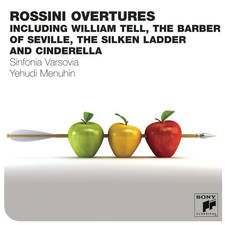Mozart In Love
Her artistry inspired Mozart to write some of his most scintillating soprano roles. Meet Nancy Storace, the English opera star who stole his heart
We were in a hall in Lambeth rehearsing for Opera Holland Park. The nearest place for lunch was the Museum of Garden History, housed in the former St Mary’s Church alongside Lambeth Palace, and the burial place of Captain Bligh as well as six archbishops.
While waiting in the queue, I was idly reading the names on the wall plaques when I saw one that made my heart jump. It was in memory of Anna Selina Storace, known to her friends as Nancy, the soprano for whom Mozart wrote the role of Susanna in Le Nozze Di Figaro.
Nancy was, by all accounts, a phenomenal artist and an outstanding actress, with a voice of considerable range and power. She was born in London in 1765, the daughter of an Italian double-bass player who had married an Englishwoman.
Taught by the great castrato Venanzio Rauzzini (for whom Mozart had written his Exsultate, Jubilate), at the age of 13 she accompanied her parents to Italy to visit her elder brother, Stephen, who had been studying composition in Naples (he was to become a successful composer who died from gout aged only 33).
The Italian opera houses fell over themselves to book Nancy. Her Italian debut produced such tumultuous applause that a jealous Luigi Marchese, the castrato who appeared alongside her, demanded she be sacked on the spot.
In 1784, a representative of the Austrian Emperor Joseph arrived in Italy looking for singers for the newly-formed Italian Opera Company in Vienna. Nancy was immediately signed up and travelled to Vienna with her brother and mother. They made quite an impact, and not just musically: Stephen was imprisoned for fighting with an officer.
Nancy, still only 17, quickly became the darling of Vienna, adored by Emperor and public alike. With the world at her feet, she astonished everybody by marrying, against the advice of all her friends, John Fisher, a much older English violinist and composer who also happened to be a sadist. He beat her up so violently that when word reached the Emperor, Fisher was banished from the city.
It wasn’t just her marriage that caused Nancy distress. Singing in the premiere of one of Stephen’s operas, she suddenly lost her voice. It was five months before she was able to sing again. She was, she discovered, pregnant, and although the baby was born, it only lived for a month. Three of Vienna’s leading composers – Salieri, Cornetti and Mozart – joined forces to write a cantata for Nancy’s recovery.
Mozart had first seen Nancy when she made her Viennese debut in Salieri’s La Scuola De’ Gelosi. He immediately fell in love with her as an artist and, it was rumoured, their relationship actually went much deeper. Certainly Nancy and Stephen became part of Mozart’s circle and were often at his house, while he frequently had dinner with them and their mother.
Stephen had become one of Mozart’s pupils; few composers could, like him, boast that they had had a string quartet performed by Haydn, Mozart, Dittersdorf and Vanhal (a now almost-forgotten composer of over 70 symphonies). Interestingly, Stephen pronounced his surname ‘Storass’ where Nancy called herself by the Italianate ‘Storachy’.
At that time, Mozart was considered by the Viennese to be a very talented performer but a not particularly good composer. He certainly wasn’t known for his operas, even though he had written some 15.
It was vital for his career that he have a success, so he teamed up with the Italian poet and librettist Lorenzo da Ponte to turn Beaumarchais’s controversial play Le Mariage De Figaro into an opera. He saw Nancy as the perfect Susanna and there can be no doubt that, whatever the exact nature of their relationship, she inspired him to write one of the greatest of all soubrette roles.
Le Nozze Di Figaro opened, after much intrigue at court, on 1 May 1786. It was a success but not quite the smash hit Mozart had hoped for. The following year Nancy decided to return to London and Mozart wrote probably his finest concert aria, Ch’io Mi Scordi Di Te? for her as a going-away present. He accompanied her at the piano when she sang it on the eve of her departure.
Although they never saw one another again, Nancy remained in Mozart’s thoughts. He wrote to her regularly (the letters have been lost) and she is thought by many to have inspired the role of the scheming maid Despina in Così Fan Tutte.
Back in London, Nancy continued her career on the concert platform and in the opera house, performing in her brother’s works and frequently appearing with the Irish tenor Michael Kelly who had also performed in the premiere of Le Nozze Di Figaro with her, singing the roles of Don Basilio and Don Curzio.
She even managed to get Mozart a commission to come to London and write an opera, but he was too ill to travel. On the night of Mozart’s death, Nancy suffered a brain haemorrhage and almost died herself.
She survived and with her latest lover, a tenor 11 years her junior, went on a European concert tour, appearing before Napoleon and Josephine, Nelson and Lady Hamilton.
Nancy died in 1817 at the age of 51 following a stroke, her friend Michael Kelly at her bedside. Her funeral took place at St Mary’s on 2 September, and her mother arranged for the plaque at which I had been staring to be set in the walls of the church. A remarkable place to find such a direct link to one of the greatest composers and best-loved operas of all time.
























